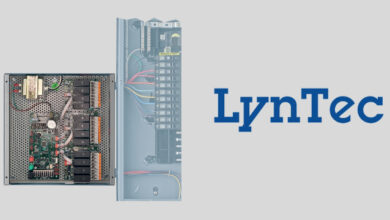Delve into Linuxia: A Versatile Open-Source Operating System

In the realm of open-source operating systems, Linuxia shines as a versatile and reliable choice for users seeking a powerful yet user-friendly computing experience. Unlike many other Linux distributions, Linuxia boasts its own kernel, enabling faster and more dependable updates.
In this comprehensive guide, we’ll delve into the world of Linuxia, exploring its unique features, installation process, and practical applications. We’ll also weigh the pros and cons to help you determine if Linuxia is the right choice for your computing needs. From its modularity to its support for various devices, it has much to offer, and by the end of this article, you’ll have a deeper understanding of what makes this open-source OS a compelling option.
What Is Linuxia?
Linuxia, a free and open-source operating system, sets itself apart in the Linux landscape with its dedication to stability and performance. Designed around its own kernel, it ensures that users receive updates quickly and reliably. While many Linux distributions focus on specialized optimizations, this OS emphasizes simplicity and flexibility, making it accessible to a broad audience, from novice users to power enthusiasts.
Key Features of Linuxia
Linuxia offers a rich set of features that contribute to its appeal:
- Independence: Unlike distributions that rely on external kernels, Linuxia’s proprietary kernel guarantees efficient updates, enhancing overall system stability.
- User-Friendly Design: It prioritizes user experience, ensuring that both newcomers and experienced users can navigate the interface with ease.
- Customization: The OS supports extensive customization, allowing users to tailor their computing environment to suit their preferences.
- Applications: It comes with a selection of pre-installed applications, minimizing the setup time for users.
- Multilingual Support: It accommodates users worldwide with its support for multiple languages.
- Versatile Use: Linuxia finds application not only on desktops and laptops but also in diverse environments like web hosting and IoT applications.
A Step-by-Step Guide to install Linuxia
Getting started with Linuxia is straightforward. Here’s a step-by-step guide to installing this open-source OS:
- Download Linuxia: Obtain the installation files either through digital or physical media, or by downloading the ISO image from the Linuxia website.
- Boot from Installation Media: If using physical media (DVD/CD), insert it into your computer and follow on-screen prompts. For USB installations, insert the flash drive and start the installation process.
- Configuration: During installation, you’ll configure essential settings, including your username and password for system access.
- Updates and Verification: Decide on update preferences and ensure software signatures for security.
- First Boot: After installation, you’ll be greeted with a login screen. Enter your credentials and gain administrative access to your machine.
Navigating the User Interface
Linuxia offers an intuitive and user-friendly interface. Users can explore its functionalities with ease, making it an ideal choice for those new to Linux. The graphical user interface (GUI) can be accessed through the Linuxia Launcher, providing a familiar environment for various computing tasks.
Software Ecosystem and Application Management
One of Linuxia’s strengths lies in its robust software ecosystem. Users can easily install and manage applications to tailor their experience. The Linuxia Launcher includes an Applications Manager, simplifying the process of adding new software and customizing the OS.
From Desktops to IoT Devices
Linuxia’s versatility extends to practical applications. It can serve as a dependable desktop operating system, host websites, or even power IoT devices like smart TVs and drones. Its reliability and flexibility make it an attractive choice for a wide range of computing needs.
Community and Support
Linuxia benefits from a vibrant user community and online support resources. Users can find tutorials, tips, and solutions on platforms like YouTube and through web searches. Online forums and communities provide opportunities for troubleshooting and exchanging ideas with fellow Linuxia enthusiasts.
Pros and Cons
Opting for Linuxia presents several distinct advantages. Its reliability, stemming from a proprietary kernel, ensures that users benefit from dependable and efficient updates. Moreover, it excels in customization, allowing users to tailor their computing environment precisely to their preferences, fostering a personalized and efficient workflow. Its user-friendly design is particularly welcoming to beginners, making the transition to this open-source operating system seamless.
However, it’s important to note that Linuxia, while robust, may have a smaller user base compared to more widely adopted operating systems, potentially leading to a more limited pool of resources and support.
Conclusion
In conclusion, Linuxia emerges as a formidable contender in the world of open-source operating systems. Its dedication to stability, user-friendliness, and versatility make it a compelling choice for a broad spectrum of users. Whether you’re embarking on your Linux journey or seeking a dependable platform for your computing needs, It is worth exploring. Its unique features, customization options, and reliable updates set it apart as a formidable open-source OS.





